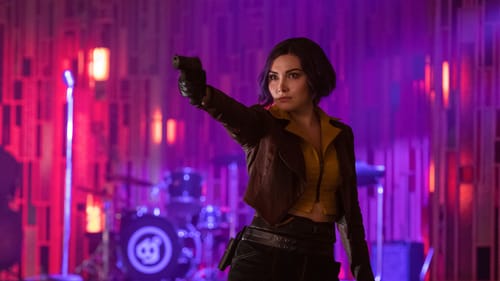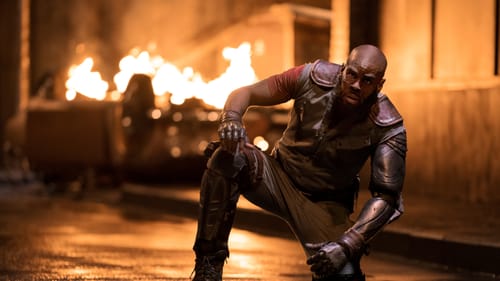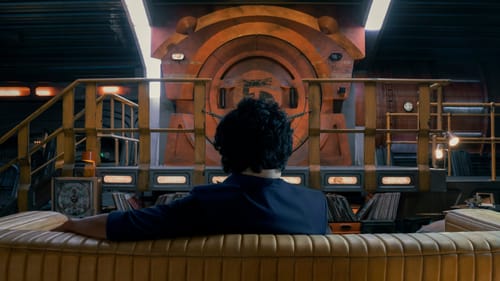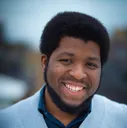Stay in the Loop
BSR publishes on a weekly schedule, with an email newsletter every Wednesday and Thursday morning. There’s no paywall, and subscribing is always free.
The real remake blues
What Netflix’s short-lived Cowboy Bebop teaches us about chance

Watching Netflix’s Cowboy Bebop, the live-action adaptation of the classic anime that was cancelled almost as soon as the series premiered, made me remember that every once in a while, we stumble on a film or a TV show that hits home in a seemingly impossible way. When the original Cowboy Bebop landed in the US in 2001, I had one of those moments. What are the chances that it would happen again with Netflix’s live-action adaptation of Cowboy Bebop?
In those moments, the show may not even be that great, but something hooks us. Our senses are wide open for adventure, curiosity, and a lesson learned. It’s hard to draw up these moments on our own. They have to come to us, and outside factors influence our attachment to a show: intriguing suggestions from a friend, a need for a creative jolt, or an escape from a world gone too real. So many variables must align to forge a special connection between the viewer and the show. It’s virtually impossible mathematically.
Three, two, one, let’s jam
Watching Netflix’s live-action Cowboy Bebop series, I found myself thinking a lot about chance and serendipity. The show is a massive production, and how anything at this scale gets made (especially in a pandemic) is an overwhelming thought. As someone who was once a filmmaker, I know firsthand that producing a film or show is a mountain to climb. It’s also a mountain to fall—most projects never make it past pre-production. Considering the talent of actors like John Cho, Daniella Pineda, and Mustafa Shakir, led by series writer Christopher Yost (Teenage Mutant Ninja Turtles, X-Men: Evolution, and The Mandalorian—all successful, iterative shows), there was promise. Here was a chance for an adaptation to add to the show’s canon.
That chance ended in a flash. Netflix canceled the show weeks after its premiere, leaving it with only one season. There was more story to tell—Yost noted shortly before the show’s release that there were plans for a second season. The show’s production was set back by an injury that sidelined Cho for months just before the arrival of Covid-19. This came after the show spent almost two years in development hell. Despite all those variables, the show got made. But a sharp decline in viewership was all that Netflix needed to see. For us, we will collectively see this Cowboy Bebop as a flop, a disappointment, and a missed opportunity. That feels unfair, despite viewers’ criticisms.
The original Cowboy Bebop TV show relied on its own fair share of chance. Director Shinichirō Watanabe, screenwriter Keiko Nobumoto (who passed away a week after the Netflix show was canceled), composer Yoko Kanno, and a celebrated team of designers and producers had worked together on previous notable Japanese anime projects. Titles like Macross Plus, Mobile Suit Gundam, Bubblegum Crisis, and The Vision of Escaflowne paved the way for what would become the adored, original 2001 edition. However, Cowboy Bebop almost didn’t happen.

A lasting impression
In a focus panel at Otakon 2013, Watanabe talked about how Cowboy Bebop originated with entertainment company Bandai’s toy division, which wanted to sell spacecraft toys attached to the show. According to Watanabe, Bandai told him “So long as there’s a spaceship in it, you can do whatever you want.” But Watanabe’s idea of “whatever you want” didn’t align with Bandai’s vision, leaving the project in limbo before another company picked it up later. Watanabe joked that “if they hadn’t, you might be seeing me working the supermarket checkout counter right now.”
Cowboy Bebop arrived on the scene, despite the long odds. Unbridled from restrictive visions and goals, the show would leave a lasting impression on not only anime but on other genres of film and television. American film director and screenwriter Rian Johnson cites Cowboy Bepop as an influence on his films. The late comedian and actor Robin Williams gushed about the show in 2013. Showrunner André Nemec remembers watching the show with his brother in 2011 and falling in love with it, six years before the live-action adaptation was announced. The opening sequence in FX’s Archer is an homage to Cowboy Bebop’s opening.
Imagine if Cowboy Bebop had been canceled before it even left the ground, like most shows. Watanabe committed to his and his team’s vision despite the project falling almost beyond the brink. That takes courage and chance, and it paid off. That’s a story in itself, the kind of story that goes unnoticed or underappreciated, especially when it hits home.

Who’s watching, then and now
In 2001, anime was rare and taboo. The world was still relatively analog, too. If you wanted to find anime, you had to take trips to a video store and scour the foreign films section, or stay up till 2am watching Cinemax or SyFy. Its scarcity made it precious, and sharing what you found with friends was a way to bond. Shows like Cowboy Bebop helped me cultivate relationships that would turn into creative collaborations. Synchronized late-night watch-alongs over the phone accented my first high-school love. But it wasn’t about how great of a story Cowboy Bebop was—because, well, its story isn’t that great. What made it great was how it came to be and how it forged communities in a time when the world was just starting to converge and shrink because of the internet.
The people who watched the original as kids and young adults are the ones who are making some of television’s best today. They borrowed the show’s genre-bending, pioneering elements and are weaving new art, films, and shows with innovative ideas. In what feels like the golden age of television, what we’re watching and consuming today is inspiring the future class. But when streaming services are going by the numbers and not paying attention to the intangibles, it’s hard for a show like Bebop to survive. It never had a chance, and that’s discouraging on a personal level. Say what you will of the new show’s quality; I have empathy for the production’s eventual fall off the mountain.

Animating hopes
Anime adaptations have a tumultuous history. From Ghost in the Shell to Dragonball Evolution and Death Note, anime struggles to translate into live-action. Arguably ripe for reinvention, Cowboy Bebop ends up being just another remake casualty that missed its chance to move the needle in a new way. However, the adaptation left me contemplating the bigger picture behind what gets made, how it’s created, and what impact it will leave on its audiences, regardless of whether or not I personally enjoyed it. I’m grateful Netflix took the chance on Cowboy Bebop, and I hope it helps align the variables for a groundbreaking adaptation of a Japanese anime in the future.
What, When, Where
Cowboy Bebop. Developed by Christopher Yost. Streaming on Netflix.
Sign up for our newsletter
All of the week's new articles, all in one place. Sign up for the free weekly BSR newsletters, and don't miss a conversation.

 Kyle V. Hiller
Kyle V. Hiller